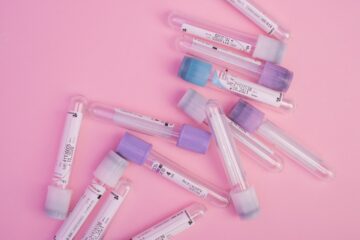![]()
Introduction:
As per the World Health Organisation (WHO), drugs and technology facilitate health services’ efficiency, primarily when provided at affordable costs to mass populations. WHO believes that each health system must strive to achieve this objective by balancing other necessary resources to have potent, safe, and high-quality medical technology and drugs.[1]
On average, it takes a drug at least ten years to complete the journey from its discovery to be available at the marketplace and at the staggering cost of $2.6 billion.[2] This cost does include the development costs for drugs that were successful and made it to the market and the ones that have essentially failed en route. The likelihood that a drug will affirmatively enter clinical testing and thereby attain approval is assessed to be less than 12 percent.[3]
New drugs and diagnostic equipment are some examples of advancements in medical technology; they can drastically improve the health outcomes and the holistic performance of a healthcare system. Despite the numerous benefits of medical technology and drugs, it is imperative to consider the same disadvantages.
The introduction of new technology in the medical field and new drugs changes the balance between resources. Often, it also maximizes the cost of healthcare. Radical advances in medicine have altered the roles of hospitals, primary healthcare, and social care facilities. Developing countries are adversely impacted as they have restricted possibilities to invest in medical technology unless they are willing to let go of essential and necessary health services. Not only this, but wealthy countries also have to manage the public’s requirements against demands for advanced medicines and drugs.[4]
Prices for medical technologies and drugs are set by the international market standards, mostly evading the representation that the consumers of a developing country require. However, this should not be a determining factor for the availability of a drug or medical technology.
History of Medical Technology and Drugs
The practice of medicine and medical technology has been evolving incessantly. Physicians, medical practitioners, scientists, and medical researchers continue to seek new methods to better their patients’ lives. This technology can be traced back to when ancient Egyptians carried out research to diagnose and treat various diseases. A similar practice and fervent research remains today where people are working in the medical field to tackle issues head-on to explore new findings and research results.[5]
The healthcare industry has become increasingly one of the most technologically advanced. The ambit of the term ‘medical technology’ extends to equipment, products, methods, applications, and drugs that improve the quality of healthcare and its accessibility to patients. Persistent innovation in the healthcare industry does not indicate slowing down anytime soon.[6]
Medicine has been reformed in the last two centuries, and these reformations were profoundly associated with technological developments. The U.S. Office of Technology Assessment defines medical technologies as “the drugs, devices, and medical and surgical procedures used in medical care, and the organizational and supportive systems within which such care is provided.”[7] Medical technology, therefore, makes up much of modern medicine. Medical advances have transformed diagnostic practices and treatment schemes, and scientific developments have been closely linked to new medical research methods and to the growth of what we label biomedicine, a union between laboratory science and medical practice.[8] They have inspired industries and led to significant organizations.
The ancient Indian medicine system has been considered one of the most coherent, curative, and wholesome, both in its ideas and measures. The philosophical foundations of Ayurveda, its origin, science, and evolution have been studied intensively by Indian historians. It has also been studied parallel to the ancient Greek medicine system to draw comparisons and with ancient Chinese and Tibetan medicine.[9]
The earliest reliable information in India concerning medicine and medical practitioners is available from 1500 BCE.[10] From Vedic Healers to the emergence of Ayurveda derived from Greek visitors to India, Buddhists’ texts, and Chanakya’s Arthashastra. The foundation of Ayurveda can be found in the Atharva Veda in its conviction in plants’ medicinal value.[11]
The current dominant models of medical and healthcare systems in India emerged in the colonial era. Colonial rulers, regional governments, and medical practitioners educated in modern medicine have preferred western medicine over domestic systems. It also obtained funding from private philanthropy organizations such as the Rockefeller Foundation. While the colonial state may have introduced Western medicine’s hegemony, it was sustained and expanded by powerful parts of the nationalist leadership and medical profession after 1947.[12]
Medical Technology and Drugs in India
Healthcare in India faces numerous hurdles that include improper access, low insurance penetration, and an ever-increasing chronic disease burden. Concurrently, traditional business models have experienced hardships to show appealing returns on investment when it is not the case for a few large providers. Infusion of technology — along with expansion in infrastructure and efficiencies derived from enhanced processes — could help upgrade the accessibility and affordability of healthcare as affirmed by the experts at the 2020 Wharton India Economic Forum held in January of this year Mumbai.[13]
Regardless of its shortcomings, India’s healthcare sector has a lot to look forward to concerning several aspects. The government-led effort to get healthcare providers to integrate electronic medical records allows artificial intelligence (AI) to gain information from a patient’s data to provide better treatment. Telecommunications bandwidth’s availability enables medical knowledge to enter disadvantaged rural markets and areas through telemedicine and tele-consulting services provided over cell phones.
The ‘Make in India’ program of the Indian government promotes indigenous production of medical devices and helps reduce prices for goods such as stents and implants that have been imported so far. Simultaneously, India’s policy regulators ought to accommodate technological interventions such as the rise of digital pharmacies with the required controls in place.
According to Sangita Reddy, joint managing director of Apollo Hospitals, the first phase of technology-driven increased productivity will come from performance improvements. Inventory management will be a strategic priority, as hospitals tend to store tens of thousands of products, she said. The second phase is the generalization of procedures to increase accessibility for patients, she said, which shall include the predictability of appointments, simple medical scheduling, and minimizing the waiting time when anyone comes in. The application of her company, AskApollo, facilitates nearly 7,000 appointments daily and guarantees a doctor’s waiting period of not over 20 minutes, except in an emergency.[14]
A Legal Perspective on Medical Technology and Drugs in India
The Medical Device Rule, 2017 (hereinafter referred to as MDR) was issued under the Drugs and Cosmetics Act, 1940 (hereinafter referred to as DCA). It provides for the management and regulation of certain categories of situations stated below:
- The devices employed in both internal and external use for diagnosis, treatment, prevention, or mitigation of any disorder in a human being and animals which have been notified and pointed out by the government under the DCA;
- The government has also given some substances or devices that previously affected human beings’ operation or structure recognition under the DCA. Such substances include intrauterine, condoms, disinfectants, and insecticides;
- Substances that are used for surgeries; for example, surgical dressing, bandages, staples, sutures, ligatures, blood, and blood components bags; and
- Devices that find use in vitro diagnosis.
In the categories mentioned above, devices and substances specified under (1) and (2) have already been recognized by the government and have also been mentioned in Annexure A labeled ‘Notified Medical Devices.’ The categories listed above fall within the ambit of MDR.
Further divisions have been made between medical technologies based on an increased risk under MDR. However, both MDR and DCA have multiple purposes that are stated below:
- To regulate and maintain matters related to the export-import, production, distribution, and market availability of notified medical devices,
- To sustain the apportionment of devices specified in MDR to consumers, and
- To maintain or regulate any medical equipment or device in the Indian market.
The Central Drugs Standard Control Organization (CDSCO), led by the Drugs Controller General of India (DCGI), is always answerable for any and all acts of the State Drug Licensing Authorities, the implementation of policies and regulations and affirming uniformity of the same in the whole of India.
Emerging Trends in Medical Technology due to COVID-19
Certain trends in medical technology have accelerated due to the presence of Covid-19. Some of these are blockchain, Artificial Intelligence (AI), wearables, and data sharing.[15]
Blockchain provides a secure way to track transactions. In the medical field, it can be used to track the link of custody of an item, for example, ventilators or masks, from when it was manufactured, its distribution to a hospital, and when it reaches the end consumer – the patient.
Data sharing can be applied to patients’ accessing their own medical records without being interrupted by information blockers. When administered alongside privacy laws, this existing data can also be used to estimate the risks of certain diseases in mass populations. Steps can then be taken to prevent the same to ensure a healthy lifestyle for a large part of the public.
AI has already found its use in the medical field. Chatbots on medical and hospital sites have been used extensively at the time of Covid-19, thereby reducing the demand for healthcare workers. Scanning medical images to identify cancers and tumors is another application of AI in the medical field. However, it must be pointed out that AI does not exclusively make any diagnosis but only assists the physician or the medical practitioner with their accuracy.
Healthcare monitors such as FitBit and Apple watches are quite famous and can be used by physicians to monitor their patients’ health.
Conclusion: Addressing the Myth of ‘New Drugs or Devices are Always Beneficial’
A well-known logical fallacy underlies the appeal to novelty or newness. As consumers, it has permeated our mind that new (goods, products, and services) means better performance or higher efficiency merely because they are new. This notion is also prevalent in healthcare. New drugs and medical devices are being approved; this approval claims that newer is always better. However, researches have shown that this is not always the case: sometimes existing drugs and medical technology for administrating health conditions can be just as good, if not better, safer, and more affordable than new technologies.[16]
Although they differ within various healthcare systems, the drug approval processes do not necessarily ensure superiority over the existing drug or device. In Canada, for instance, drug manufacturers pit their new drug against an existing one to compare their effectiveness and convince that they are no less significant than an existing therapy and will potentially indicate improvement.[17]
Such demonstrations do not fundamentally ensure enhancement over existing drugs. Besides, clinical trials are, in some cases, short-term, and people of all age groups do not engage with them, which does not guarantee a generalized outcome for the entire population.[18] The statements stated prior do not intend to negate the overall effectiveness of any drug.
Several new drugs and devices do provide vital advantages. Numerous drug technologies are decidedly better than those before them; many illnesses or conditions, such as HIV/AIDS, which could not be treated earlier, can be administered and managed with medications. New means many things. However, when it comes to medications, drugs, and medical technology, believing this notion always means that better can be expensive. Promoting newer health technology reduces the optimal usage of healthcare funds and can even put a patient at risk.
References:
[1] Drugs and Technology,WHO, https://www.who.int/healthsystems/topics/technology/en/
[2] Joseph A. DiMasi et al., Innovation in the Pharmaceutical Industry: New Estimates of R&D Costs, 47 J. HEALTH ECON. 20, (2016).
[3] Christy Wilson, New Technologies are Accelerating Drug Development, Bringing Hope to Patients, ELSEVIER (Jun. 03, 2016), https://www.elsevier.com/connect/new-technologies-are-accelerating-drug-development-bringing-hope-to-patients
[4] Supra note 1.
[5] Medical Technology, HEALTHCARE BUSINESS & TECHNOLOGY, http://www.healthcarebusinesstech.com/medical-technology-2/#:~:text=From%20the%20early%20days%20in,and%20treat%20hundreds%20of%20diseases.
[6] Ibid.
[7] Medical Technology and the Costs of the Medicare Program (Washington, D.C.: US Congress Office of Technology Assessment, OTA-H-227, 1984), p. x.
[8] P. KEATING & A. CAMBROSIO, BIOMEDICAL PLATFORMS: REALIGNING THE NORMAL AND THE PATHOLOGICAL IN LATE-TWENTIETH CENTURY MEDICINE (Cambridge Mass.: MIT Press, 2003).
[9] Anu Saini, Physicians of Ancient India, 5 J. FAMILY PRIM. MED. CARE 254, (2016).
[10] MAZARS G., A CONCISE INTRODUCTION TO INDIAN MEDICINE (2006).
[11] Supra note 9.
[12] Indira Chakravarthi, Medical technology in India: Tracing Policy Approaches, 57 INDIAN J. PUBLIC HEALTH 197, (2013).
[13] How Technology is Changing Healthcare in India, WHARTON UPENN (Jan. 28, 2020), https://knowledge.wharton.upenn.edu/article/technology-changing-health-care-india/
[14] Ibid.
[15] John Murphy, Medical Tech Trends Accelerated by Covid-19, MDLINX (Jun. 27, 2020), https://www.mdlinx.com/article/medical-tech-trends-accelerated-by-covid-19/72Nt3cXT96dcZuxXIcOr8v
[16] Eichler H, et al., Relative Efficacy of Drugs: An Emerging Issue between Regulatory Agencies and Third-Party Payers, 9 NAT. REV. DRUG DISCOV. 277, (2010).
[17] Ibid.
[18] Canadian Foundation for Healthcare Improvement, Myth: When it Comes to Drugs and Devices, Newer is Always Better, 19 J. HEALTH SERV. RES. POLICY 192, 192 (2014).



0 Comments